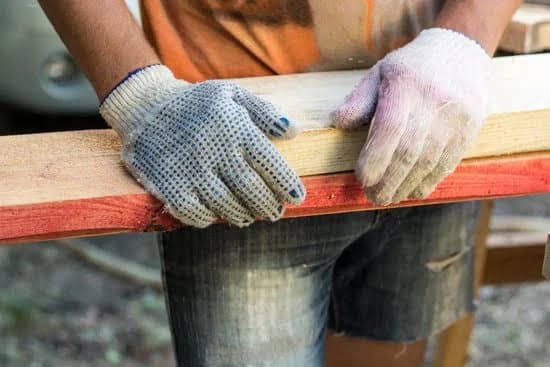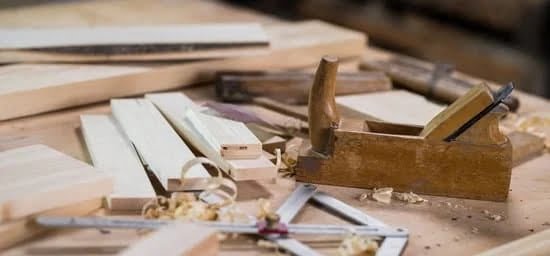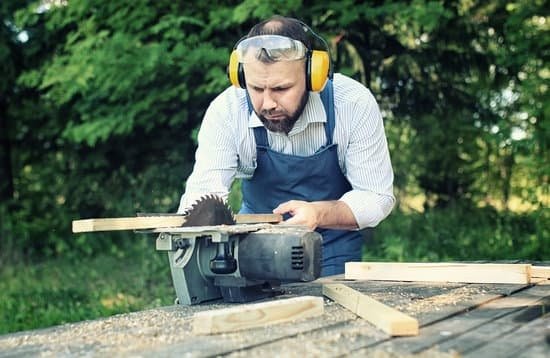Woodworking machines are essential tools used in woodworking to shape, cut, carve, and create intricate designs on wood materials. These machines have revolutionized the woodworking industry, making it easier and faster to produce high-quality wood products. From simple hand tools to complex automated machinery, woodworking machines come in various shapes and sizes to cater to different skill levels and project requirements.
In this article, we will delve into the world of woodworking machines, exploring their history, types, essential tools for beginners, advanced machinery for experienced craftsmen, safety precautions when using them, maintenance tips, and how to choose the right machine for your projects. Whether you are a novice looking to start your woodworking journey or a seasoned woodworker seeking to upgrade your equipment, understanding what woodworking machines are and how they can benefit your craft is crucial.
By gaining insights into the different types of woodworking machines available in the market and learning how to operate them safely and effectively, you can unlock endless possibilities in creating unique wood creations. So let’s dive deeper into the realm of woodworking machines and discover the tools that have shaped the art of woodworking throughout history.
History of Woodworking Machines
Woodworking machines have a long and rich history that dates back centuries. The use of mechanical tools to aid in woodworking can be traced back to ancient civilizations, where simple machines like the lathe and saw were used to create intricate wooden pieces. However, it wasn’t until the Industrial Revolution that woodworking machines truly began to evolve into the variety of tools we see today.
During the 19th and early 20th centuries, advancements in technology led to the development of more complex and specialized woodworking machines. Machines such as the planer, jointer, and router became essential tools in woodshops and factories, allowing craftsmen to work faster and with greater precision. These innovations revolutionized the woodworking industry, making mass production of wooden products possible on a scale never seen before.
As technology continued to advance, woodworking machines became even more sophisticated and versatile. Computer numerical control (CNC) machines revolutionized the industry by allowing craftsmen to create highly detailed and complex designs with incredible accuracy. Today, there is a wide range of woodworking machines available, from traditional hand tools to state-of-the-art computer-controlled equipment that can handle even the most intricate woodworking projects.
Types of Woodworking Machines
Woodworking machines are essential tools used by craftsmen to shape, cut, and carve wood into various forms and designs. These machines have evolved over the years, becoming more precise, efficient, and versatile in their functions. There are several types of woodworking machines available in the market, each serving a specific purpose in the woodworking process.
One of the most common types of woodworking machines is the table saw, which is used for making straight and accurate cuts in wood. It consists of a circular saw blade mounted on an arbor that is driven by an electric motor. The depth of the cut can be adjusted by raising or lowering the blade, allowing for different thicknesses of wood to be cut.
Another important woodworking machine is the wood lathe, which is used for turning cylindrical pieces of wood to create symmetrical shapes such as table legs, spindles, and bowls. The wood piece is mounted on a spindle that rotates at high speeds while cutting tools are applied to shape the wood as it spins. Wood lathes come in various sizes to accommodate different projects and types of wood.
Additionally, there are other woodworking machines such as band saws, planers, jointers, routers, and sanders that play crucial roles in shaping and finishing wood projects. These machines offer versatility and precision in cutting, smoothing rough edges, creating intricate designs, and assembling wood pieces with accuracy. Whether you are a beginner or an experienced craftsman, having the right woodworking machines can greatly enhance the quality and efficiency of your work.
| Types of Woodworking Machines | Description |
|---|---|
| Table Saw | Used for making straight and accurate cuts in wood. |
| Wood Lathe | Utilized for turning cylindrical pieces of wood into symmetrical shapes. |
| Band Saw | Aids in cutting curved or irregular shapes in wood. |
Essential Woodworking Machines for Beginners
As a beginner in the world of woodworking, it is essential to familiarize yourself with the basic machines that will help you kickstart your craft. These tools not only make your work easier but also lay the foundation for developing your skills and knowledge in woodworking. Here are some of the must-have woodworking machines for beginners:
- Table Saw: A table saw is a versatile tool that allows you to make straight and precise cuts on wood. It consists of a circular blade mounted on an arbor, driven by an electric motor. This machine is indispensable for cutting large pieces of wood into smaller, more manageable sizes.
- Wood Router: A wood router is a power tool used for hollowing out an area in a piece of wood. It is commonly used for creating decorative edges, grooves, and joints in woodworking projects. With different bits, you can achieve various designs and shapes on your wood pieces.
- Random Orbital Sander: Smooth surfaces are crucial in woodworking projects, and a random orbital sander helps achieve just that. This machine sands in a circular motion while moving back and forth to prevent swirl marks on the wood. It is perfect for beginners who want to finish their projects with beautifully smooth surfaces.
These essential woodworking machines form the cornerstone of any beginner’s workshop. As you gain experience and confidence in your skills, you can slowly expand your collection of tools to include more specialized equipment tailored to your specific projects. Remember to always prioritize safety when using these machines – wear appropriate protective gear, follow manufacturer instructions, and seek guidance from experienced craftsmen when needed.
By investing time in learning how to properly operate and maintain these fundamental machines, beginners can build a solid foundation in woodworking that will serve them well as they progress in their craft. The journey from novice to skilled craftsman begins with mastering these essential tools and honing your skills through practice and dedication.
Advanced Woodworking Machines for Experienced Craftsmen
Experienced craftsmen often require more sophisticated woodworking machines to achieve intricate designs and efficiently produce high-quality wood products. One of the advanced woodworking machines that are commonly used is the CNC router. This computer-controlled machine allows craftsmen to create complex cuts, shapes, and designs with precision and repeatability. The CNC router is versatile and can be used for a wide range of woodworking projects, from furniture making to cabinetry.
Another essential advanced woodworking machine is the wood lathe. This machine allows craftsmen to turn wooden pieces into intricate shapes and designs by rotating them rapidly against cutting tools. Wood lathes are commonly used for creating table legs, chair spindles, bowls, and other curved or cylindrical components in woodworking projects. With advanced features such as variable speed control and indexing capabilities, wood lathes provide craftsmen with the flexibility to explore their creativity.
In addition to CNC routers and wood lathes, experienced craftsmen may also utilize specialized machines like jointers, planers, bandsaws, and spindle molders in their woodworking workshops. These advanced woodworking machines help craftsmen achieve precise cuts, smooth finishes, and intricate details in their projects. By investing in quality woodworking machines and continuously honing their skills, experienced craftsmen can take their craft to the next level and create one-of-a-kind wood products that showcase their expertise.
| Woodworking Machine | Description |
|---|---|
| CNC Router | A computer-controlled machine for creating complex cuts and designs with precision. |
| Wood Lathe | A machine for turning wooden pieces into intricate shapes like table legs or bowls. |
| Jointer | Used for flattening surfaces of wood pieces before joining them together. |
Safety Precautions When Using Woodworking Machines
Woodworking machines are essential tools for anyone involved in woodworking, whether they are a beginner or an experienced craftsman. However, these powerful tools can be dangerous if not used correctly. It is crucial to follow safety precautions to prevent accidents and ensure a safe working environment. Below are some important safety tips to keep in mind when using woodworking machines:
- Always wear appropriate personal protective equipment (PPE) such as safety goggles, ear protection, and a dust mask to protect yourself from debris, noise, and harmful particles.
- Read the manufacturer’s instructions carefully before operating the woodworking machine to understand its specific requirements and safety guidelines.
- Keep your work area clean and organized to prevent tripping hazards and ensure that there is enough space for your movements while operating the machine.
Woodworking machines have sharp blades and moving parts that can cause serious injuries if not handled properly. By following these safety precautions and being cautious at all times, you can significantly reduce the risk of accidents in your woodworking workshop. Remember that safety should always be your top priority when working with woodworking machines.
- Avoid distractions while using woodworking machines by focusing solely on the task at hand and avoiding any unnecessary movements or conversations that could distract you from operating the machine safely.
- Do not wear loose clothing or jewelry that could get caught in the machinery, potentially causing harm or accidents while working with woodworking machines.
- Unplug the machine when changing blades or performing maintenance tasks to prevent accidental starts and ensure that it is fully powered off before making any adjustments or repairs.
By following these safety precautions diligently every time you use woodworking machines, you can enjoy your craft without putting yourself at unnecessary risk of injury. Always prioritize your well-being by staying alert, being informed about proper machine operation, and maintaining a safe workspace conducive to productive woodworking projects.
How to Maintain and Care for Woodworking Machines
Woodworking machines are essential tools for any woodworking enthusiast, whether they are beginners or experienced craftsmen. Proper maintenance and care of these machines are crucial to ensure their longevity and optimal performance. Neglecting to maintain woodworking machines can lead to decreased efficiency, poor quality output, and even safety hazards. In this section, we will discuss the importance of regular maintenance and proper care practices for woodworking machines.
Regular Cleaning
One of the most important aspects of maintaining woodworking machines is keeping them clean. Sawdust, wood shavings, and other debris can build up in the mechanisms of the machine, leading to malfunctions and decreased performance. Regularly cleaning your woodworking machine after each use can help prevent buildup and prolong its lifespan. Use a vacuum or compressed air to remove debris from hard-to-reach areas, such as motor vents and blade guards.
Lubrication
Another key maintenance practice for woodworking machines is lubrication. Moving parts such as bearings, gears, and slides need to be properly lubricated to reduce friction and wear. Refer to the manufacturer’s recommendations for the type of lubricant to use on specific parts of your machine. Over-lubricating can attract more dust and debris, so it is crucial to apply the right amount at regular intervals.
Inspection and Adjustment
Regular inspection of your woodworking machine is essential to catch any issues before they escalate into major problems. Check for loose bolts, misaligned components, or signs of wear on blades or belts. Make necessary adjustments or repairs promptly to avoid further damage or safety hazards. Additionally, ensure that all safety features are working correctly, such as blade guards, emergency stops, and kickback prevention devices.
By following these maintenance tips and practices regularly, you can ensure that your woodworking machines perform optimally, produce high-quality results, and remain safe to use for years to come. Remember that investing time in caring for your tools will pay off in the long run by increasing their lifespan and saving you money on repairs or replacements in the future.
Tips for Choosing the Right Woodworking Machine for Your Projects
When it comes to woodworking projects, having the right woodworking machine can make all the difference in the quality and efficiency of your work. With a wide range of options available in the market, choosing the right woodworking machine for your projects can be a daunting task. Here are some tips to help you select the perfect woodworking machine for your specific needs:
Assess Your Woodworking Needs
Before investing in a woodworking machine, take the time to assess your specific woodworking needs. Consider the type of projects you plan on working on, the size of the materials you will be working with, and the level of complexity involved in your projects. Understanding your requirements will help you narrow down your options and choose a machine that best suits your needs.
Research Different Types of Woodworking Machines
There are various types of woodworking machines available, each designed for specific functions and tasks. From table saws and planers to routers and jointers, it’s essential to research and understand what each type of machine is used for. This knowledge will help you determine which machines are necessary for your projects and which ones you can do without.
Consider Your Budget and Space
When selecting a woodworking machine, it’s crucial to consider both your budget and available workspace. Some machines can be quite costly, so it’s essential to set a budget that aligns with your needs. Additionally, ensure that you have enough space in your workshop to accommodate the size and operation of the machine. Taking these factors into account will help you make an informed decision when choosing the right woodworking machine for your projects.
By following these tips and considering factors such as your specific needs, researching different types of woodworking machines, and keeping budget and space constraints in mind, you can choose the perfect woodworking machine for your projects that will help you achieve high-quality results efficiently. Remember that investing in quality machinery is crucial for ensuring precision and safety in your woodworking endeavors.
Conclusion
In conclusion, woodworking machines play a crucial role in the craft of creating high-quality wood products. These machines have evolved over time, from simple hand tools to sophisticated and highly efficient power tools that make woodworking more precise and efficient. The history of woodworking machines dates back centuries, showing how innovation and technology have shaped the industry.
For beginners, essential woodworking machines like table saws, routers, and drills are recommended to start learning the basics of woodworking. These tools are versatile and can help beginners practice different techniques while ensuring safety regulations are met. As craftsmen gain experience and skill in their craft, advanced woodworking machines such as jointers, planers, and lathes become indispensable for creating intricate and professional-grade wood projects.
It is important to emphasize safety precautions when using woodworking machines to prevent accidents and injuries. Regular maintenance and care for these machines also ensure their longevity and optimal performance.
When choosing the right woodworking machine for your projects, consider factors like the type of wood you work with, the scale of your projects, and your level of expertise to select the most suitable tool for your needs. Overall, woodworking machines are essential tools that enable craftsmen to achieve precision, efficiency, and excellent results in crafting high-quality wood products.
Frequently Asked Questions
What Is the Most Useful Woodworking Machine?
The most useful woodworking machine would likely be the table saw. It is versatile and essential for making straight and angled cuts in wood pieces of varying sizes. A table saw can also be used for ripping, cross-cutting, and miter cutting with precision.
What Machine Is Used for Wood?
The machine commonly used for working with wood is the versatile power drill. A power drill is essential for drilling holes, driving screws, and other fastening tasks in woodworking projects. It is a fundamental tool that every woodworker should have in their workshop.
What Machinery Is Used in Carpentry?
Carpentry involves using a variety of machinery to create wooden structures and products. Some common machinery used in carpentry includes the band saw for curved cuts, the jointer for flattening edges, the planer for thicknessing wood, and the router for shaping edges or creating joinery. These machines are crucial in achieving precision and efficiency in carpentry projects.

Hi everyone! I’m a woodworker and blogger, and this is my woodworking blog. In my blog, I share tips and tricks for woodworkers of all skill levels, as well as project ideas that you can try yourself.





